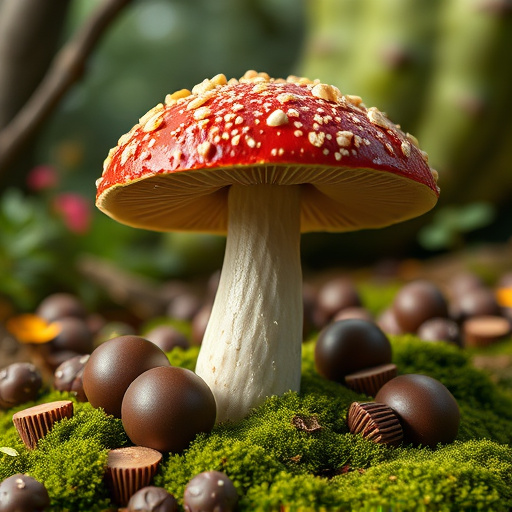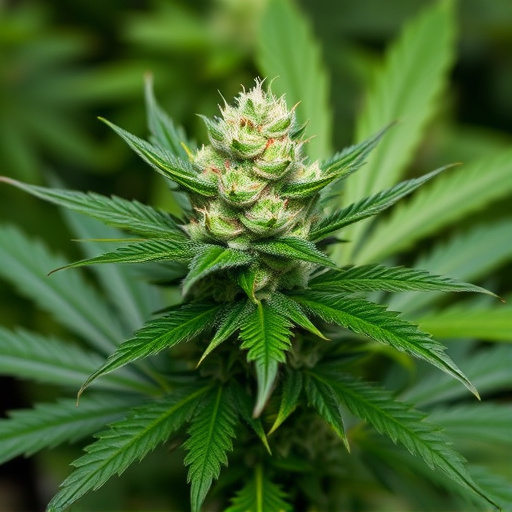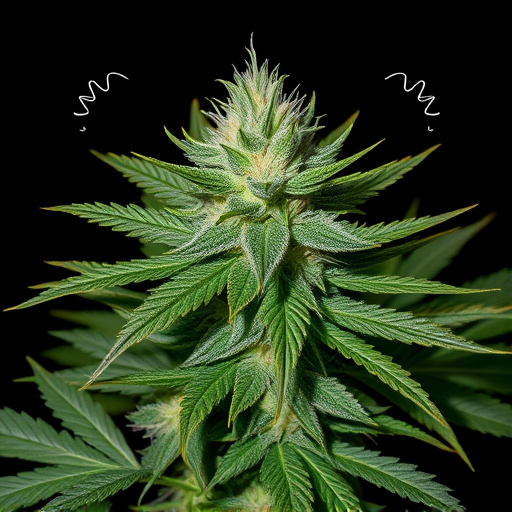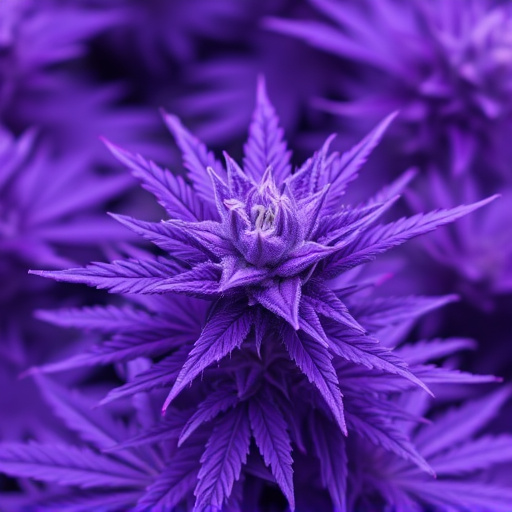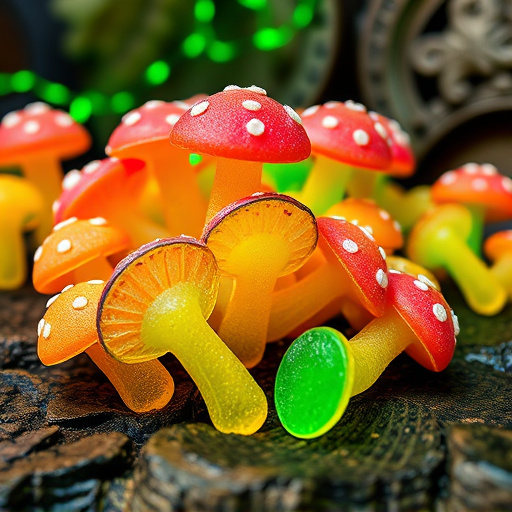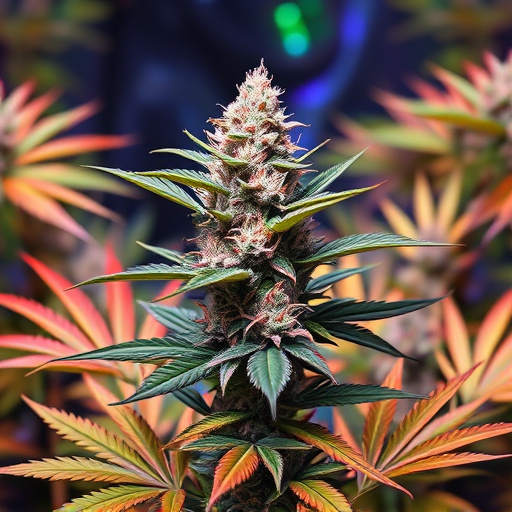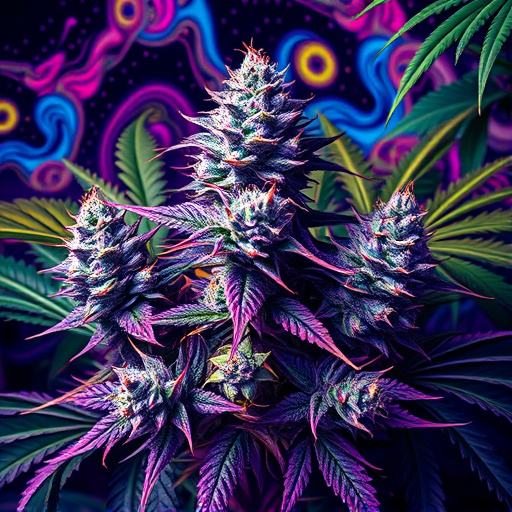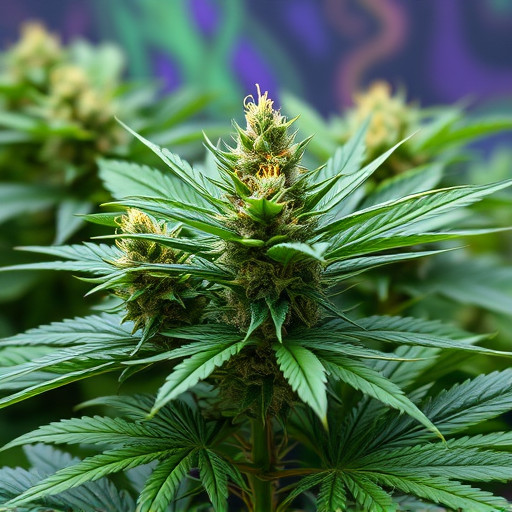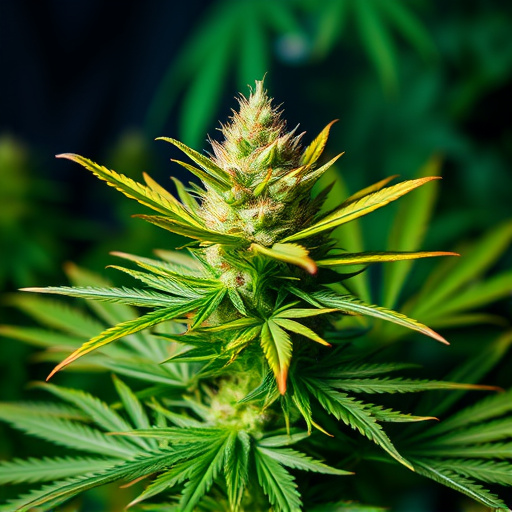Psychedelic cannabis strains, rich in THC and CBD, offer unique therapeutic benefits due to their specific terpene profiles. These compounds interact with the body's endocannabinoid system, addressing mental health conditions like PTSD, depression, and anxiety. Clinical studies show positive outcomes, positioning psychedelic cannabis as a promising alternative or adjunctive therapy. Research continues to explore its full potential, with the medical community considering integration into standard care protocols for enhanced mental health treatment.
Cannabis flowers have garnered significant attention for their potential medical benefits, with psychedelic cannabis strains playing a pivotal role. This article delves into the intricate world of cannabis composition and its therapeutic applications. We explore how these floral wonders, rich in compounds like THC and CBD, offer hope through scientific-backed cannabis-assisted therapy. Understanding the unique properties of psychedelic cannabis strains is key to unlocking their potential in treating various medical conditions.
- Understanding Cannabis Flowers and Their Composition
- The Role of Psychedelic Cannabis Strains in Medical Treatments
- Exploring the Scientific Evidence for Cannabis-Assisted Therapy
Understanding Cannabis Flowers and Their Composition
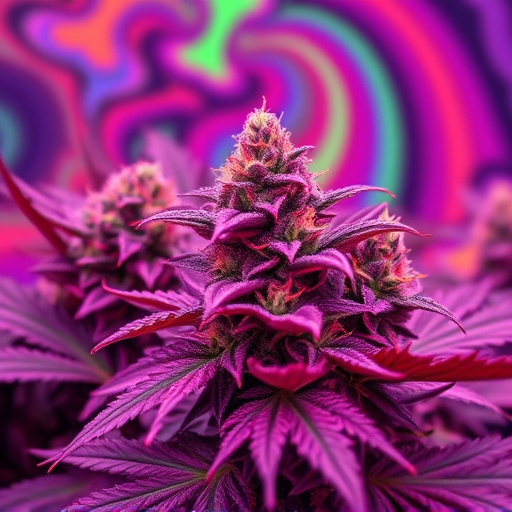
Cannabis flowers are more than just visually appealing; they are a complex blend of chemical compounds that contribute to their medicinal properties. At the heart of these benefits lies the plant’s diverse terpene and cannabinoid profile. Cannabinoids, such as THC (tetrahydrocannabinol) and CBD (cannabidiol), interact with the body’s endocannabinoid system, which plays a role in regulating mood, memory, appetite, and pain perception. Each cannabis flower variety, or strain, offers a unique combination of these compounds, making them potentially effective for diverse medical conditions.
Psychedelic cannabis strains, known for their potent effects, often contain higher levels of THC and certain terpenes that enhance its psychoactive properties. Terpenes, aromatic compounds found in many plants, add to the therapeutic potential by influencing the overall effect of the plant. For instance, myrcene, a common terpene in many cannabis strains, has been linked to relaxing and sedative effects, making it beneficial for managing insomnia or anxiety. Understanding this composition allows users to tailor their treatment and harness the specific advantages offered by different psychedelic cannabis strains for various medical needs.
The Role of Psychedelic Cannabis Strains in Medical Treatments
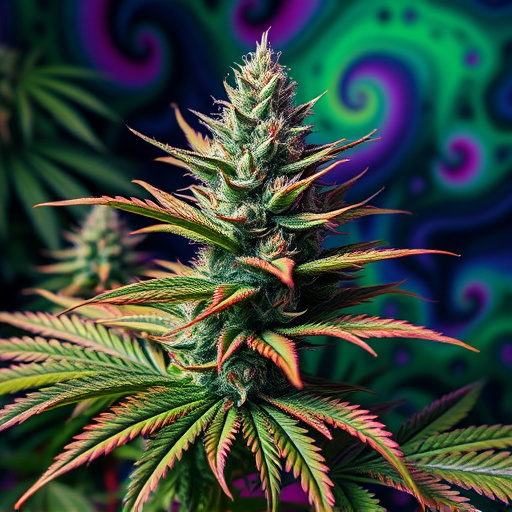
Psychedelics derived from cannabis, commonly known as psychedelic cannabis strains, are gaining significant attention in the medical community for their potential therapeutic benefits. These strains contain high levels of compounds like tetrahydrocannabinol (THC) and a compound called cannabidiol (CBD), which have been linked to various medicinal applications. Research suggests that psychedelic properties can aid in treating mental health disorders such as depression, anxiety, and post-traumatic stress disorder (PTSD). The unique effects of these strains, including altered perceptions and heightened emotional awareness, create an environment conducive to exploration and processing of deep-seated issues.
Traditional treatments often struggle with side effects and limited success rates, making psychedelic cannabis strains a promising alternative or adjunctive therapy. Clinical studies have shown positive outcomes in reducing symptoms, improving overall well-being, and enhancing quality of life for patients undergoing treatment. As research continues to uncover the full potential of these compounds, the medical community is exploring ways to integrate psychedelic cannabis strains into standard care protocols, offering new hope for individuals seeking relief from various conditions.
Exploring the Scientific Evidence for Cannabis-Assisted Therapy
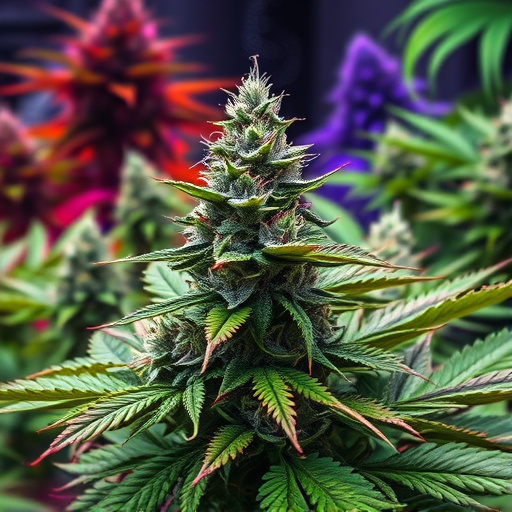
The scientific community has increasingly recognized the potential therapeutic benefits of cannabis, particularly in the form of psychedelic cannabis strains. Research into cannabis-assisted therapy (CAT) is revealing promising results for various medical conditions. Studies have explored its efficacy in treating post-traumatic stress disorder (PTSD), depression, and anxiety disorders. The active compounds in cannabis, primarily tetrahydrocannabinol (THC) and cannabidiol (CBD), interact with the endocannabinoid system in the body, which plays a role in regulating mood, memory, and perception of pain.
Psychedelic cannabis strains, known for their higher THC content, have shown potential in facilitating therapeutic experiences that can aid in mental health treatment. These strains, when administered under controlled conditions, can induce altered states of consciousness that help individuals process traumatic memories and emotions. Several clinical trials and case studies have reported positive outcomes, suggesting that cannabis-assisted therapy could be a valuable addition to conventional psychiatric treatments.
Cannabis flowers offer a plethora of medical benefits, with psychedelic cannabis strains playing a significant role. The scientific evidence supporting cannabis-assisted therapy is growing, highlighting its potential in various treatments. By understanding the composition and effects of these floral wonders, we can continue to navigate the world of cannabis, harnessing its power for improved health and well-being.
